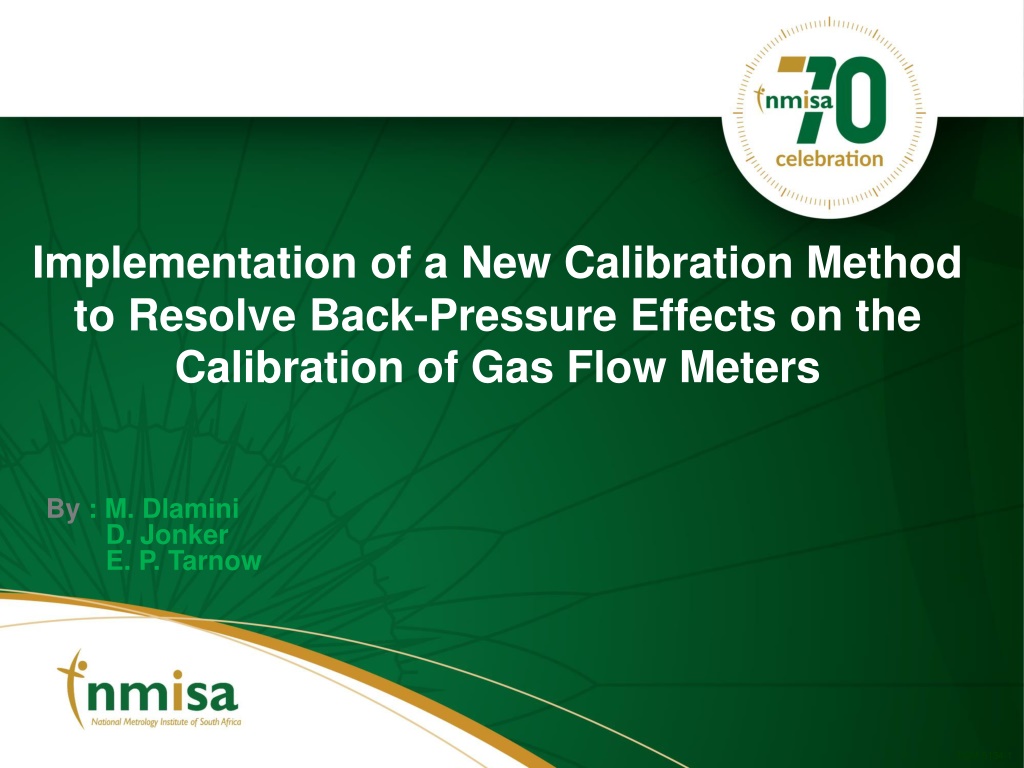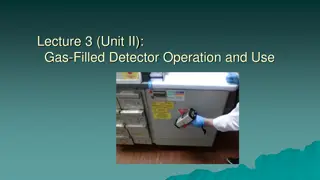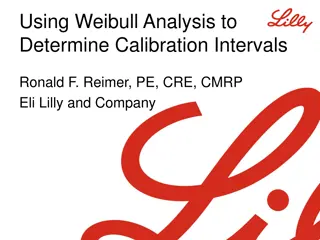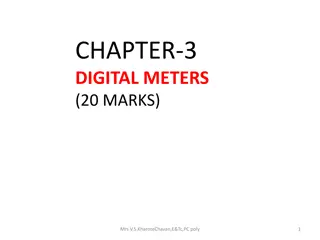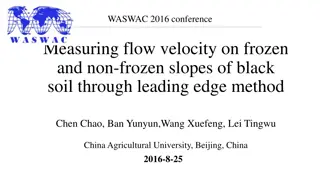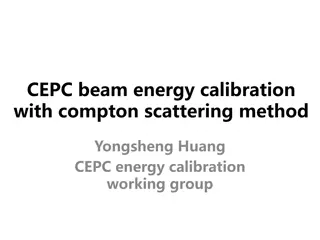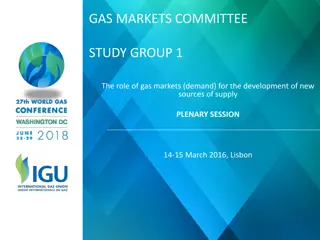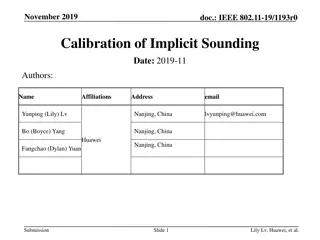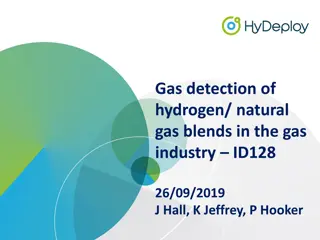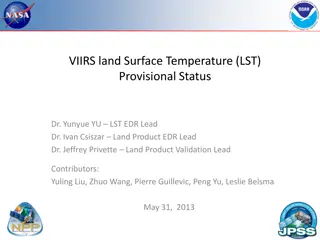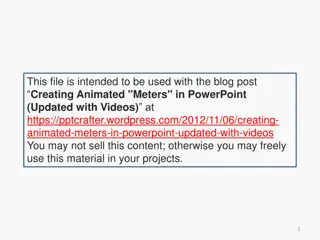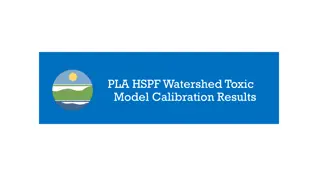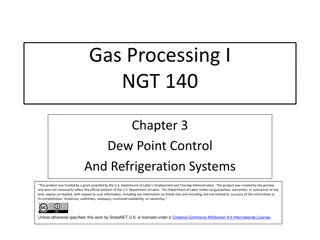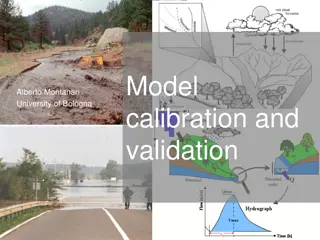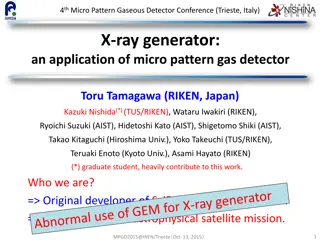New Calibration Method for Gas Flow Meters
Implementation of a new Split Method calibration to resolve back-pressure effects on gas flow meters used at atmospheric pressures. Intermediate checks, validation, and commissioning process explained with results in the gas flow laboratory. Details on the calibration setup and verification between flow cells.
Uploaded on Mar 09, 2025 | 0 Views
Download Presentation

Please find below an Image/Link to download the presentation.
The content on the website is provided AS IS for your information and personal use only. It may not be sold, licensed, or shared on other websites without obtaining consent from the author.If you encounter any issues during the download, it is possible that the publisher has removed the file from their server.
You are allowed to download the files provided on this website for personal or commercial use, subject to the condition that they are used lawfully. All files are the property of their respective owners.
The content on the website is provided AS IS for your information and personal use only. It may not be sold, licensed, or shared on other websites without obtaining consent from the author.
E N D
Presentation Transcript
Implementation of a New Calibration Method to Resolve Back-Pressure Effects on the Calibration of Gas Flow Meters By : M. Dlamini D. Jonker E. P. Tarnow TQM-5134-1
Overview Introduction Intermediate Checks Between Two Flow Cells of a Piston Prover Reference Standard Calibration Method Split Method Verification and Commissioning of the 100 l/min Flow Cell - Validation of the Split Method Conclusion TQM-5134-1
Introduction The NMISA Gas Flow laboratory performed intermediate checks on their piston prover gas flow reference standard (ML-800) using a series method. When the flow rate was above 25 l/min, an over-pressure message was displayed by the flow cell connected upstream. This indicated that the pressure to the reference standard was higher than its limits, that is, it exceeded 1,244 kPa above atmosphere. The ML-800 gas flow reference standard is designed to be used at atmospheric pressures only. A new calibration method, Split Method, was implemented and validated to have both reference standards venting to atmosphere. TQM-5134-1
Intermediate Checks Between Two Flow Cells of the Piston Prover Reference Standard Intermediate checks were performed between two gas flow reference standards flow cells, ML-800-44 (50 l/min) and ML-800-75 (100 l/min). This was done to maintain confidence in the calibration of the 50 l/min flow cell and to commission the 100 l/min flow cell. Figure 1: Showing the in line (series) calibration method for two flow cells TQM-5134-1
Intermediate Checks Between Two Flow Cells of the Piston Prover Reference Standard The results were to be used to verify that the 100 l/min reference standard was not damaged during shipping from manufacturer. Table 1: Measurement results for intermediate checks between the 50 l/min and 100 l/min flow cells using series method. ML-800-44 (ml/min) ML-800-75 (ml/min) Correction (ml/min) Expanded Unc. (ml/min) 5 017,4 5 034,3 -17,0 8,1 9 981,4 10 006 -24 17 15 004 14 992 12 23 20 045 20 032 13 32 25 087 25 073 15 42 TQM-5134-1
Calibration Method Split Method The Split Method calibration setup positions the reference standard and the UUT in a parallel configuration. This ensures that both the UUT and reference standard vent to atmosphere. Back-pressure is then eliminated. Figure 2: Split Method calibration setup. The arrows show the direction of gas flow. TQM-5134-1
Calibration Method Split Method Any flow perturbation due to the up/down movement of the reference standard s piston is avoided. The Split Method was validated using measurement results for the verification and commissioning of the 100 l/min flow cell. The Split Method was validated against a series calibration method using a laminar flow system as the reference standard. The 100 l/min flow cell was calibrated against the 50 l/min flow cell using the Split Method. It was then calibrated against the laminar flow system using a validated Series method. The results are discussed in the next section. TQM-5134-1
Verification and Commissioning of the 100 l/min Flow Cell Split Method Correction (ml/min) (ml/min) 5 000 -25,8 -27,5 10 000 -39 -42 15 000 38 -8 20 000 29 -10 25 000 18 -58 30 000 17 -106 35 000 4 -109 40 000 -13 -133 45 000 -10 -167 50 000 -9 -173 Table 2: Shows summarized Split Method validation results. Series Method Correction Split Method Exp. Unc. (ml/min) 105 105 112 109 110 116 117 121 132 132 Series Method Exp. Unc. (ml/min) 11,7 24 34 46 58 72 81 92 102 112 Nominal Flow (ml/min) Calculated |En| values 0,02 0,03 0,39 0,33 0,61 0,90 0,79 0,78 0,94 0,95 TQM-5134-1
Verification and Commissioning of the 100 l/min Flow Cell The normalized error values (En) between the Split Method and the Series method were all less than or equal to 1. The results are also shown graphically in figure 3. The graphs shows overlapping uncertainties. This indicates satisfactory performance of the Split Method. Raw validation data is presented in the full paper. TQM-5134-1
Verification and Commissioning of the 100 l/min Flow Cell Calibration of the 100 l/min flow cell using the Split Method and using the Series Method. 250.00 200.00 150.00 Correction (ml/min) 100.00 50.00 0.00 Series -50.00 Split -100.00 -150.00 -200.00 -250.00 -300.00 0 10 20 30 40 50 60 Nominal Flow Rate ( 1000 ml/min) Figure 3: Graphical presentation of the Split method validation results. TQM-5134-1
Verification and Commissioning of the 100 l/min Flow Cell The measurements indicate good agreement between the 50 l/min and 100 l/min flow cells. Using the Split Method, gas flow measurements up to 50 l/min can be performed without any over-pressure error. This was because the reference standard and UUT were both venting to atmosphere eliminating any flow restriction which would cause back pressure. TQM-5134-1
Conclusion The - reducer created flow restriction which resulted in back- pressure in the flow cell upstream. The Split Method has the two flow cells venting to atmosphere, hence the back-pressure was eliminated. Thus, flow measurements up to 50 l/min could be performed. The Split Method will also be validated to calibrate other types of instruments such as mass flow meters. TQM-5134-1
The End Thank You! TQM-5134-1
